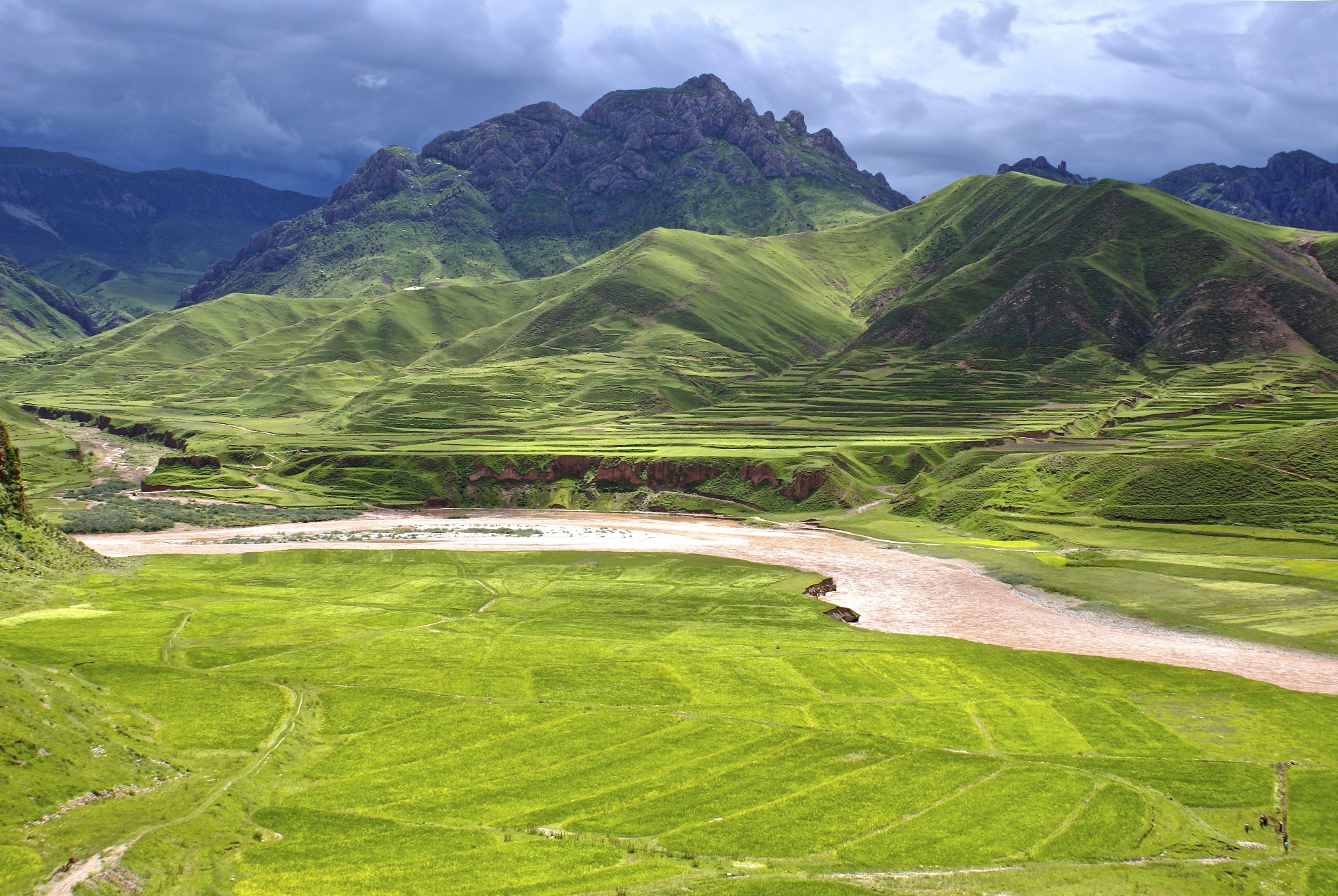This post will mostly be about how rocks are weathered, breaking down in place, and erode, the movement of weathered rock sediments.
Joints
Joints are fractures or cracks in rocks which allow weathering to occur more easily. (See picture below.)
You can see the columnar Joints in these rocks in a mountainside. These joints are prime locations for physical and chemical weathering to occur.
Physical Weathering
Physical weathering is the physical break down of a rock. One of the most common forms of physical weathering in the mountain regions of Tibet is Frost Wedging. (See Diagram below.)
http://mtweb.mtsu.edu/cribb/2.jpg
You can see that the ice expands and pushes the rock further apart. This creates physical weathering, and is common in the colder Himalayan regions of Tibet.
This is caused by water moving into the joints of a rock and then freezing. As it freezes it expands, and when wedged inside a crack this causes pressure on the rock and widens the crack. Eventually, this will break off a weak section of the rock.
A second form of physical weathering is Pressure Release. Much like the skin on our bodies, the rocks “exfoliate” which breaks off slabs of the rock. This happens when a rock is formed under pressure, and some form of quick erosion occurs and the pressure in the rock is released, and breaks off the rock slabs.
Chemical Weathering
Chemical weathering is where there is an alteration to the rock and its minerals as they are broken down. A very common form of chemical weathering in Tibet is Dissolution. This is where water dissolves the rock completely. (See picture below.)
To the left of this monastery, down in the slump of the ridge, there is a lot of smaller dirt and dust. This is a result of chemical weathering and dissolution. The rocks have been broken down into smaller granules by dissolving in water.
Some surfaces are better for change than others. Transport Limited landscapes are covered in vegetation, which limits the amount of material weathering and erosion of sediments that can occur. (See picture below.)
http://www.thelandofsnows.com/wp-content/uploads/2012/01/DSC041441.jpg
You can see in this image that there is a lot of vegetation. This makes it extremely hard for erosion to occur as the vegetation interrupts the sediment flow.
Weathering- limited landscapes have very little vegetation, which limits the rate of rock decay. (See picture below.)
http://www.himalayatraveladventures.com/public/files/483/default/beautiful-tibet-pictures-08.jpg
Here you can see that there is not much vegetation, making this a weathering-limited landscape. There is a slower rate of rock decay which limits the amount of erosion that can occur. Most of the Tibetan mountain regions are of this landscape.





No comments:
Post a Comment